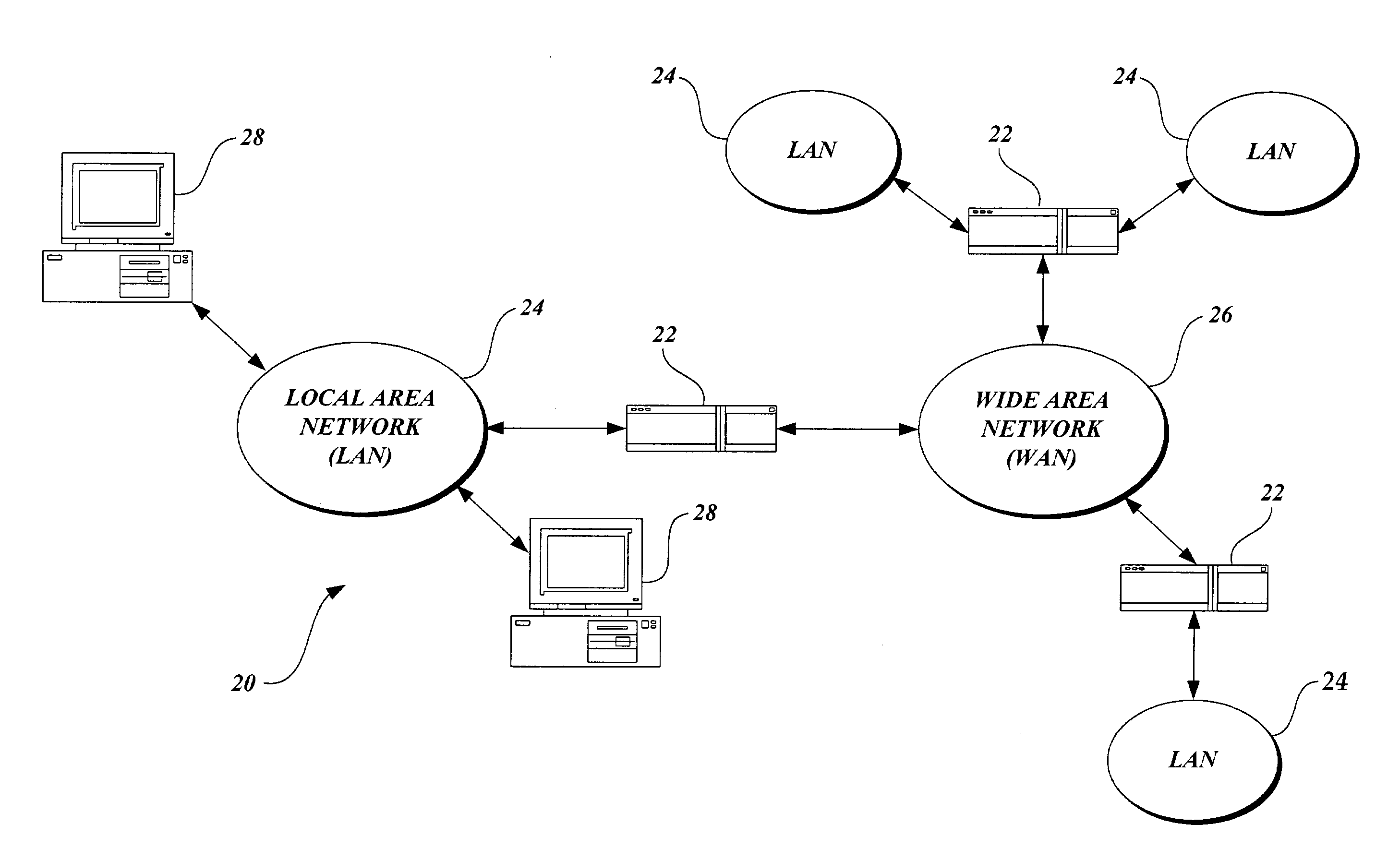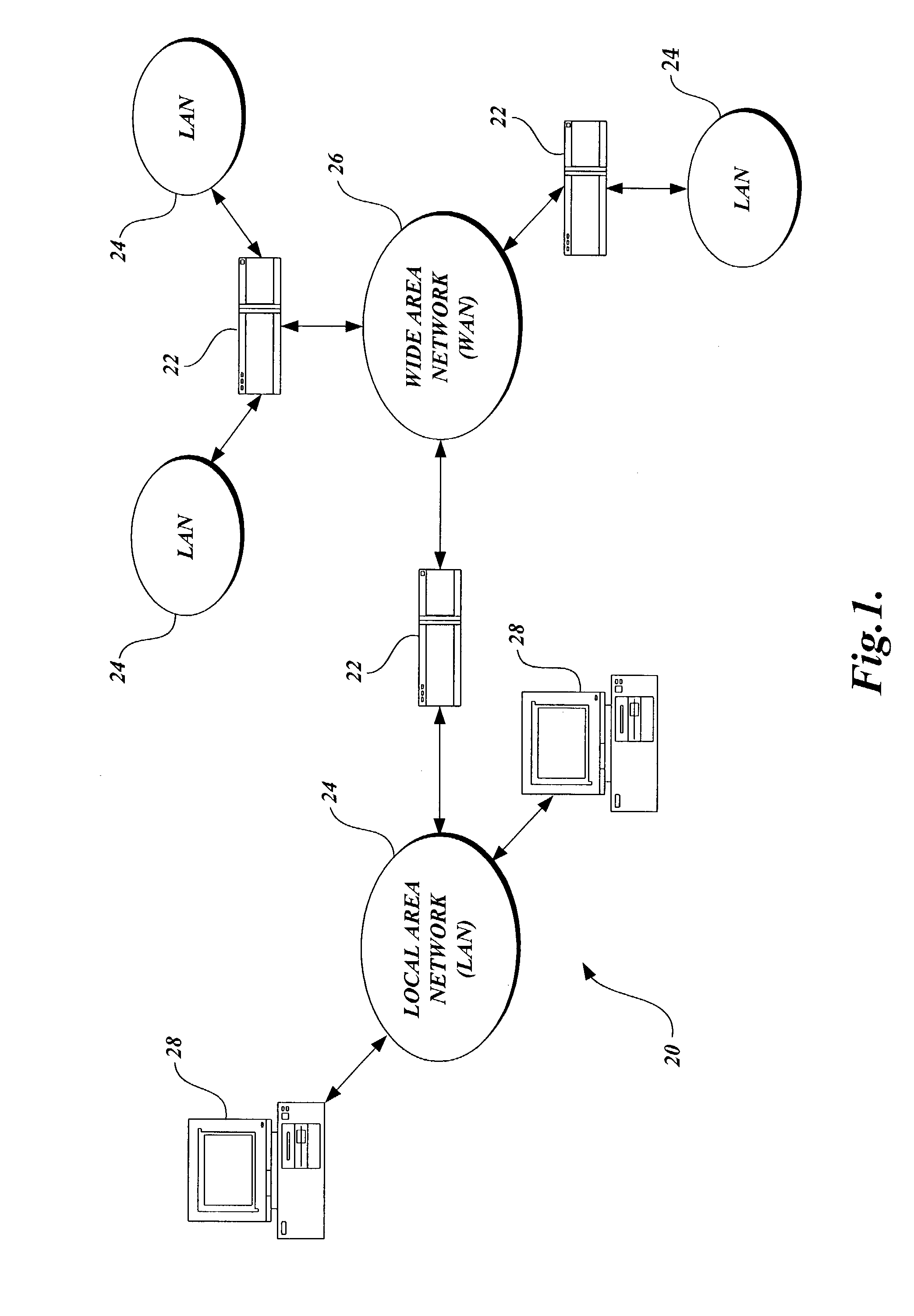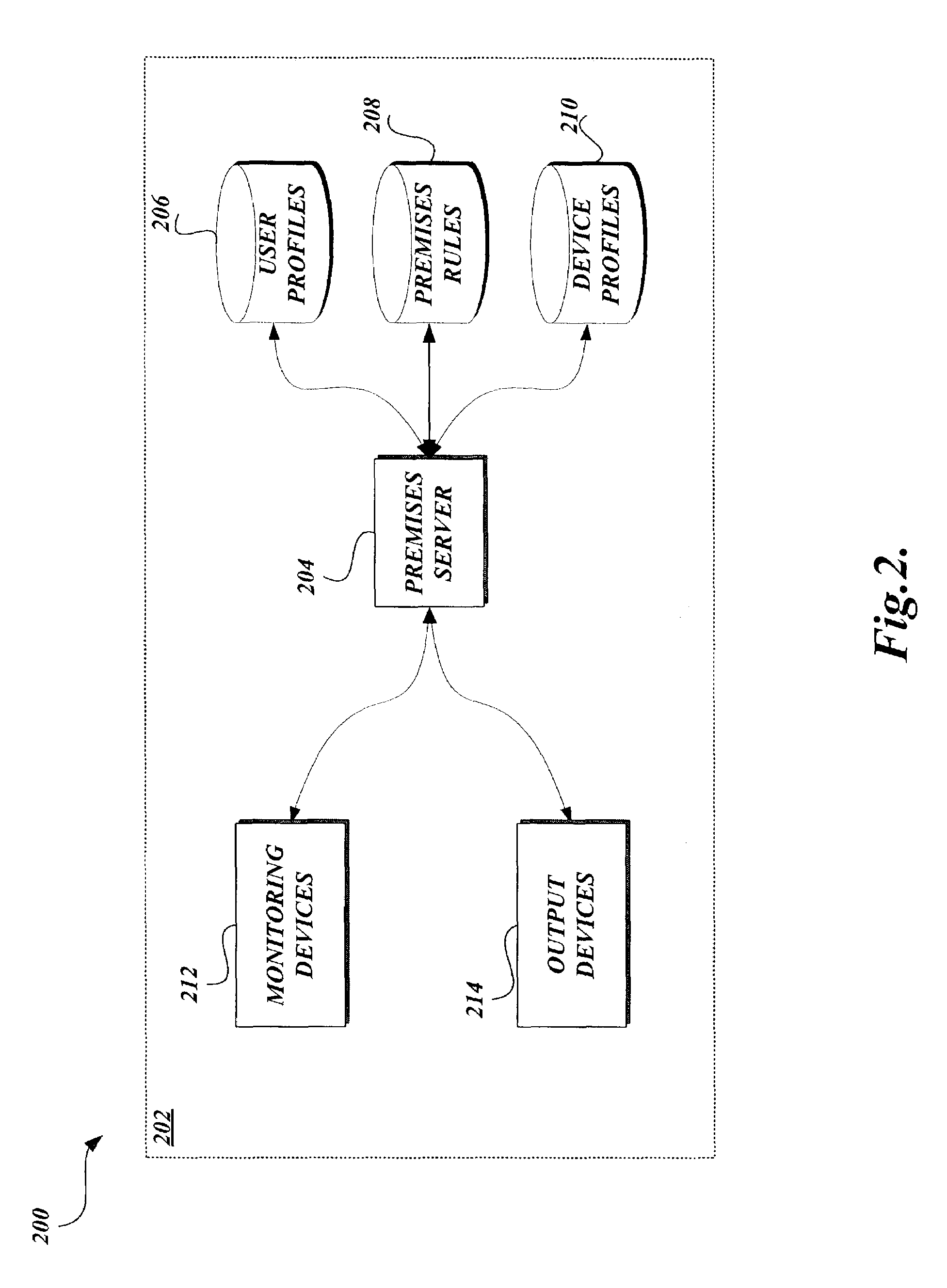System and method for performing a predictive threat assessment based on risk factors
- Summary
- Abstract
- Description
- Claims
- Application Information
AI Technical Summary
Benefits of technology
Problems solved by technology
Method used
Image
Examples
Embodiment Construction
[0021]As described above, aspects of the present invention are embodied in a World Wide Web (“WWW”) or (“Web”) site accessible via the Internet. As is well known to those skilled in the art, the term “Internet” refers to the collection of networks and routers that use the Transmission Control Protocol / Internet Protocol (“TCP / IP”) to communicate with one another. A representative section of the Internet 20 is shown in FIG. 1, where a plurality of local area networks (“LANs”) 24 and a wide area network (“WAN”) 26 are interconnected by routers 22. The routers 22 are special purpose computers used to interface one LAN or WAN to another. Communication links within the LANs may be wireless, twisted wire pair, coaxial cable, or optical fiber, while communication links between networks may utilize 56 Kbps analog telephone lines, 1 Mbps digital T-1 lines, 45 Mbps T-3 lines or other communications links known to those skilled in the art.
[0022]Furthermore, computers 28 and other related electr...
PUM
 Login to View More
Login to View More Abstract
Description
Claims
Application Information
 Login to View More
Login to View More - R&D
- Intellectual Property
- Life Sciences
- Materials
- Tech Scout
- Unparalleled Data Quality
- Higher Quality Content
- 60% Fewer Hallucinations
Browse by: Latest US Patents, China's latest patents, Technical Efficacy Thesaurus, Application Domain, Technology Topic, Popular Technical Reports.
© 2025 PatSnap. All rights reserved.Legal|Privacy policy|Modern Slavery Act Transparency Statement|Sitemap|About US| Contact US: help@patsnap.com



